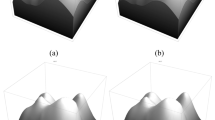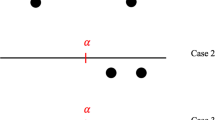Abstract
We integrate into a neo-classical multi-period consumer choice model two new elements: (1) storage and holding activities within a household and (2) an “economic landscape” containing many stores at different distances from the house, that sell possibly different product lines at different prices. The theory leads to multipurpose shopping trips in the one-household one-store case. In the one-household many-store model, we prove the existence of optima by an enumeration argument. We describe an iterative maximization process that generates a cost-minimizing “structure” of shopping trips. This “trip structure” defines a pattern of trips of different lengths to purchase different goods at relevant stores, so as to minimize the purchase and contextual (holding plus transport) cost of any level of consumption, with trip frequency and time-spacing determined over the planning horizon.
Similar content being viewed by others
References
Clark, W. and Rushton, G. 1970. Models of intra-urban consumer behavior and their implications for central place theory.Economic Geography 46: 486–497.
Curry, L. 1967. Central places in the random spatial economy.The Journal of Regional Science 7: 217–238.
Eaton, B. C. and Lipsey, R. G. 1977. The introduction of space into the neoclassical model of value theory. InStudies in modern economic analysis, eds. M. J. Artis and A. R. Nobay, Oxford: Basil Blackwell.
Garfinkel, F. S. and Nemhauser, G. L. 1972.Integer programming. New York: John Wiley and Sons.
Hanson, S. 1980. Spatial diversification and multipurpose travel: implications for choice theory.Geographical Analysis 12: 245–257.
Harwitz, M., Lentnek, B. and Narula, S. C. 1983. Do I have to go shopping again? A theory of choice with movement costs in time and money.Journal of Urban Economics 13: 165–180.
Harwitz, M., Lentnek, B. and Narula, S. C. 1979. Towards a contextual theory of demand: the household model. Buffalo: SUNY, Department of Economics, Discussion Paper 454.
Lentnek, B., Harwitz, M. and Narula, S. C. 1981. Spatial choice in consumer behavior: towards a contextual theory of demand.Economic Geography 57: 362–372.
Rushton, G. 1969. Analysis of spatial behavior by revealed space preference.Annals of the Association of American Geographers 59: 391–400.
Author information
Authors and Affiliations
Rights and permissions
About this article
Cite this article
Narula, S.C., Harwitz, M. & Lentnek, B. Where shall we shop today? A theory of multiple-stop, multiple-purpose shopping trips. Papers of the Regional Science Association 53, 159–173 (1983). https://doi.org/10.1007/BF01939924
Issue Date:
DOI: https://doi.org/10.1007/BF01939924




